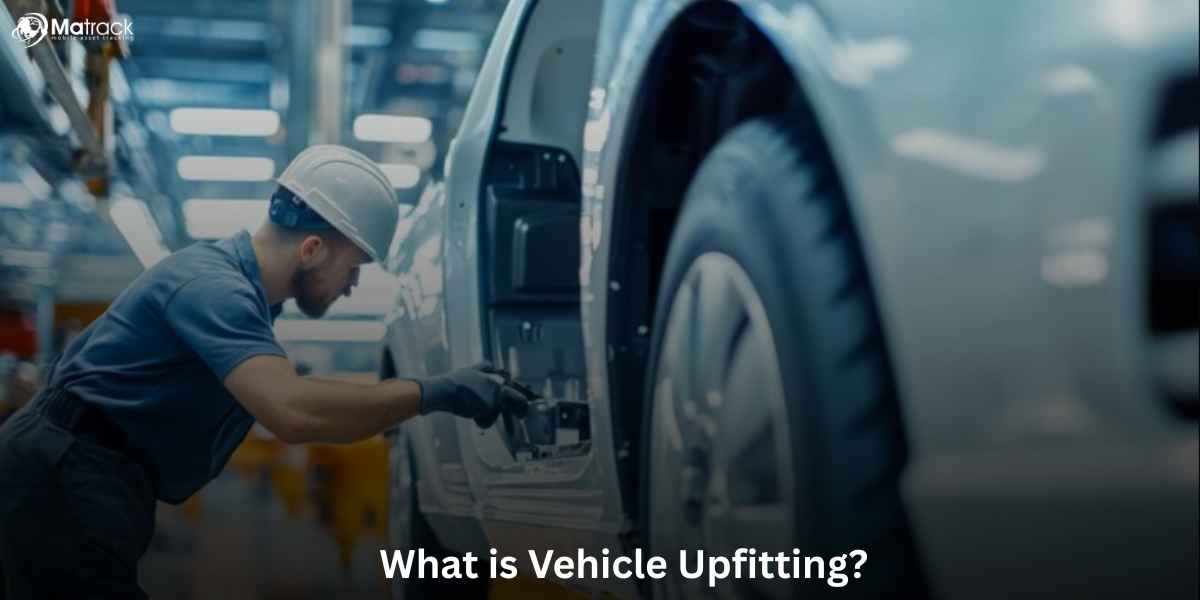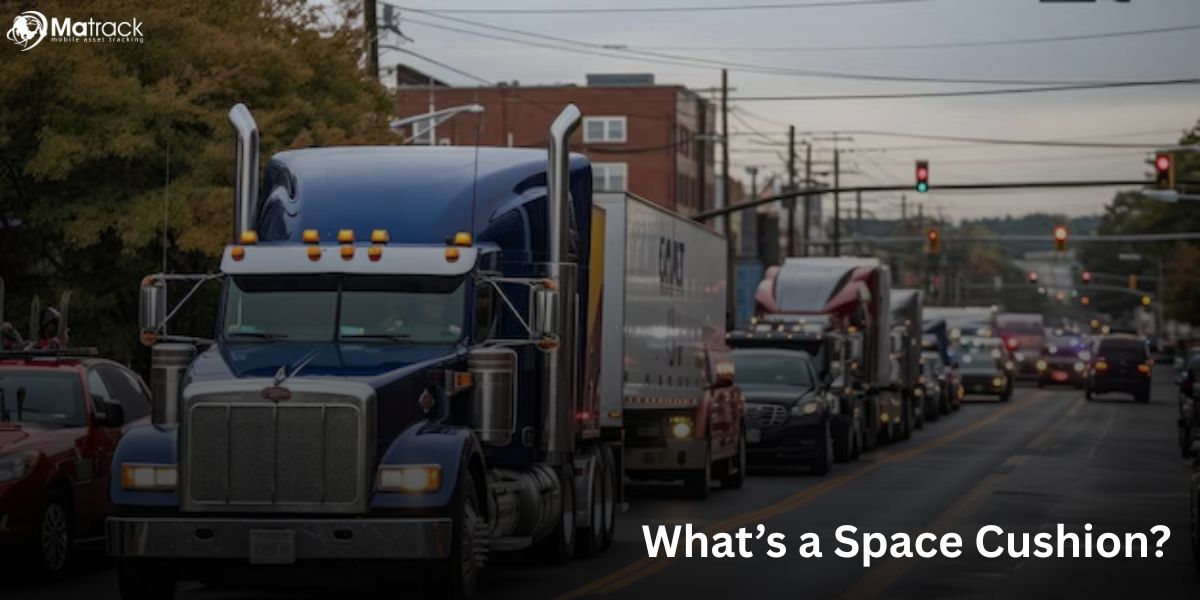Key Takeaways:
- Vehicle upfitting means customizing standard vehicles with features like shelves, racks, and tools for specific jobs.
- Upfitting improves safety, efficiency, compliance, and branding across industries like emergency services, construction, and delivery.
- Core components include interior layout, exterior add-ons, lighting systems, and telematics tools for smarter operations.
- Matrack’s telematics solutions support upfitting with GPS tracking, ELD devices, and dash cams that guide smarter design.
What is the Meaning of Vehicle Upfitting?
Vehicle upfitting means modifying a standard vehicle to add custom features that match specific job or operational requirements. It includes structural, electrical, and storage upgrades that turn basic vehicles into functional tools for tasks like field service, delivery, or emergency response.
Upfitting helps align a vehicle’s capabilities with the demands of a role, increasing safety, efficiency, and performance. Whether it’s installing shelves in a van or adding lights to a patrol car, the goal is to make the vehicle more useful and ready for real-world work.
Why is Vehicle Upfitting Important?
Increased Efficiency
Increased efficiency in vehicle upfitting means workers complete tasks faster without extra steps. Built-in shelves, tool holders, and power sources help keep everything organized and within reach.
Enhanced Safety
Enhanced safety through vehicle upfitting protects both drivers and crew during daily operations. Features like emergency lights, strong bumpers, and locked storage make the workspace more secure.
Brand Consistency
Brand consistency with upfitted vehicles keeps your business image clear and professional. Matching wraps, painted logos, and custom colors turn each vehicle into a moving advertisement.
Regulatory Compliance
Regulatory compliance in vehicle upfitting ensures the fleet meets legal and safety rules on the road. Upfits help vehicles pass OSHA and DOT checks by including required features from the start.
What are the Core Components of Vehicle Upfitting?
Interior Customization
Interior customization improves how tools and equipment are stored and accessed inside the vehicle. Shelving units keep tools secure and organized, especially for electricians, HVAC technicians, and service crews who carry a wide range of parts.
Partitions create a clear separation between the driver’s area and the cargo section, adding safety during sudden stops. Workbenches provide a built-in space for small repairs or setup tasks, helping technicians stay productive at job sites.
Exterior Modifications
Exterior modifications add space and improve the way equipment is handled outside the vehicle. Ladder racks store ladders on the roof, keeping the interior free for other gear and making access quicker.
Utility roof racks hold long or oversized materials like pipes or panels that won’t fit inside. Running boards make it easier to step in and out, especially on taller trucks or vans used in field operations.
Electrical and Lighting Systems
Electrical and lighting systems power field tools and increase visibility in low-light conditions. Inverters and batteries allow tools to be plugged in and charged directly from the vehicle without external power.
LED lighting provides strong, efficient light for early mornings or night work. Beacons and light bars make the vehicle easier to spot on busy roads or job sites, helping prevent accidents and improving safety.
Telematics and Connectivity
Telematics and connectivity systems improve fleet management and communication across teams. Fleet tracking systems enable efficient route planning, monitor driving behavior, and track vehicle usage in real-time.
Dash cams offer security and incident recording for legal or training purposes. Mobile Wi-Fi keeps teams connected to apps, files, and reporting tools, especially during remote or on-site operations.
Fleet Vehicle Upfitting by Industry
Emergency Services
Emergency vehicle upfitting includes siren systems that quickly alert traffic, medical equipment racks that keep supplies secure and accessible, and radio communication systems that maintain constant contact between teams during urgent situations.
Construction and Utilities
Construction and utility vehicle upfitting uses reinforced bumpers for off-road protection, tool drawers for fast access to equipment, and boom or crane attachments to move heavy materials safely on job sites.
Delivery Fleets
Delivery fleet upfitting features modular shelving to organize packages, temperature controls to protect perishable goods, and step ladders for safe and easy access to the vehicle roof when handling oversized items.
Telecommunications
Telecommunication vehicle upfitting includes cable reels for organized cable storage, equipment lockers for securing valuable electronics, and workbench stations that allow technicians to perform repairs directly at service locations.
Steps in the Vehicle Upfitting Process
To upfit a vehicle effectively, a methodical process is necessary. It starts with understanding end-use and ends with final installation and testing.
Step 1: Needs Assessment
Identify the tasks, tools, and mobility requirements. A utility worker and an EMT will need vastly different layouts and equipment.
Step 2: Vehicle Selection
Choose a compatible base vehicle model. Size, weight limits, drivetrain, and fuel type impact upfitting possibilities.
Step 3: Design Planning
Create a design layout with detailed component placements. 3D renderings help visualize modifications before implementation.
Step 4: Equipment Procurement
Order components from reliable vendors. This includes structural elements, electronics, storage systems, and decals.
Step 5: Installation
Certified upfitters handle installation to preserve vehicle warranty and comply with safety standards.
Step 6: Inspection & Testing
Conduct functional tests and safety checks. Validate electrical systems, mounting security, and accessibility.
Factors to Consider Before Fleet Vehicle Upfitting
Making informed decisions before starting an upfitting project reduces cost overruns and delays.
Vehicle Weight and Load Limits
Overloading can void warranties and cause accidents. Check GVWR (Gross Vehicle Weight Rating) and payload specs.
Legal and Regulatory Requirements
Ensure compliance with:
- OSHA standards for worker safety.
- DOT rules for commercial vehicles.
- Local ordinances on lighting, emissions, or signage.
Warranty Impact
Unapproved modifications can void OEM warranties. Choose upfitters certified by the vehicle manufacturer.
Resale Considerations
Highly specialized upfits can reduce resale value. Evaluate modular and reversible designs for long-term value.
OEM vs. Aftermarket Upfitting: What’s the Difference
| Aspect | OEM Upfitting | Aftermarket Upfitting |
| Provider | Vehicle manufacturer or their authorized partners | Third-party vendors or in-house teams |
| Customization | Limited customization options | Fully customizable to specific needs |
| Warranty Impact | Maintains factory warranty | May affect warranty if components are not certified |
| Quality Assurance | Factory-tested and integrated systems | Depends on vendor quality and installation standards |
| Lead Time | Longer lead times due to factory scheduling | Typically faster delivery and installation |
| Integration Level | Seamless integration with factory systems | May require additional setup or compatibility checks |
How Matrack’s Telematics Helps You In Vehicle Upfitting?
Matrack’s GPS fleet tracking helps you understand how vehicles are used on the road. This insight makes it easier to plan where to install shelves, tool mounts, or access points based on driver routes and frequent stops.
With an ELD solution, you can design the vehicle’s cab to fit legal logging needs without disrupting workflow. It helps decide where to place screens, power sources, and controls so drivers can stay compliant and comfortable.
Fleet dash cam gives real-world footage that shows where extra safety gear is needed. This helps upfitters add lighting, mirrors, or warning systems in spots that actually make a difference.



